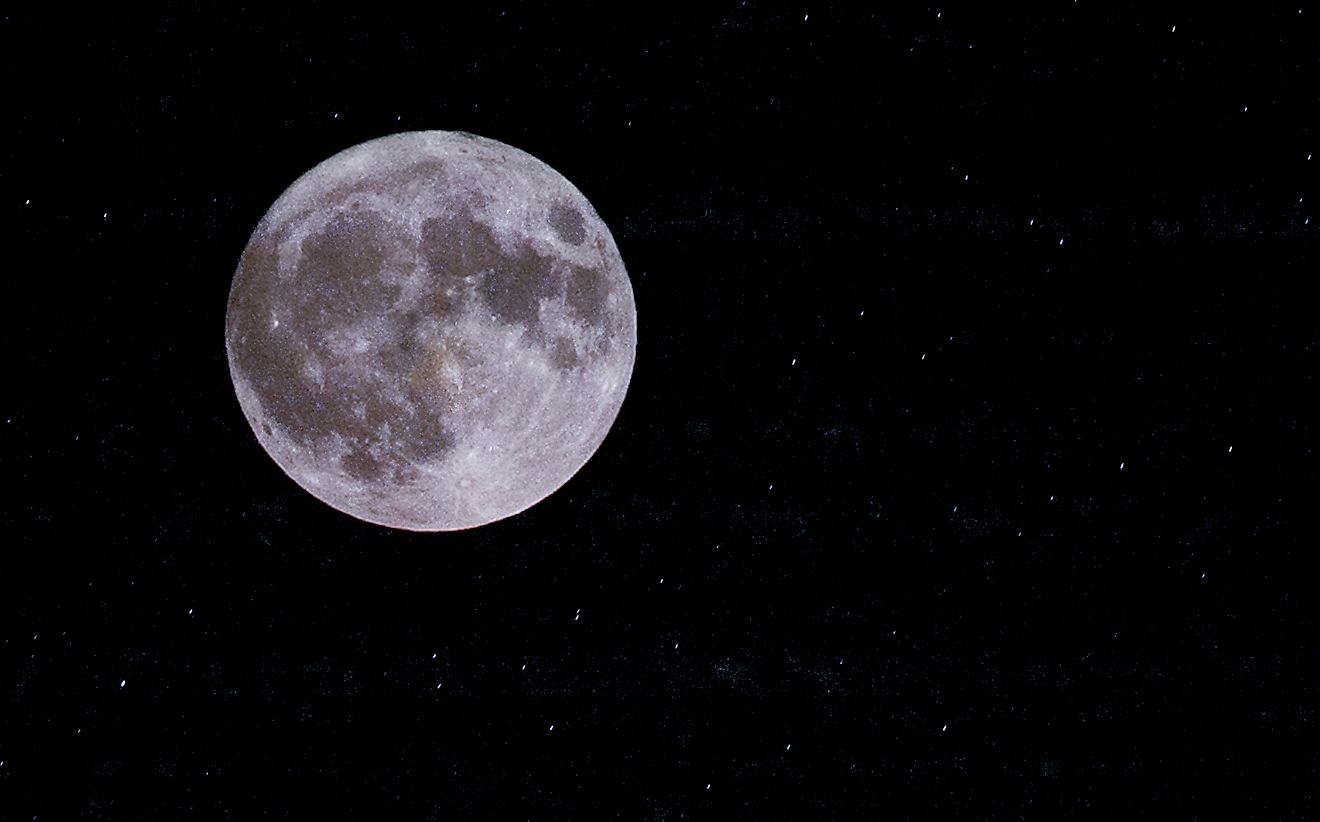Full Moon Names By Month

A full moon occurs when the moon looks completely illuminated when observed from Earth. Happening approximately once a month as part of the lunar phase, a full moon is a phenonema that occurs when the Earth is between the Moon and Sun. The naming of full moons dates back to ancient Rome, and names were often associated with calendar months.
More recently, the Algonquin people indigenous to what is now part of the United States, particularly the region between New England and Lake Superior, named full moons after seasonal changes in the natural enviroment. These names were first published in the Maine Farmers' Almanac starting in the 1930s, followed by the Farmers' Almanac, and later became considered part of American tradition and folklore.
January: Wolf Moon
January's Wolf Moon is always the first full moon of the year. The full moon would usually appear during the coldest part of winter, when wolves would often run around in packs looking for food.
February: Snow Moon
Although some referred to January’s full moon as Snow Moon, the name tended to be applied in February, when the snow was deepest and heaviest. February's full moon was also sometimes called Hunger Moon, given that it was difficult to find find food at that time.
March: Worm Moon
March's full moon, Worm Moon, was named after the worms that became able to move freely again as the ground thawed. The nightcrawlers roamed about, readjusting to the moonlight during that month. The full moon was also referred to as Full Sap Moon because maple trees became ripe for tapping in March.
April: Pink Moon
April’s full moon, named Pink Moon, is a reference to the warming weather, as well as the return of mosses and ground flowers.
May: Flower Moon
The full moon of May was named Flower Moon because of the abundance of blooming flowers. It was sometimes also referred to as Corn Planting Moon because farmers would begin to plant corn crops in the month of May.
June: Strawberry Moon
June’s full moon is named for the strawberries that were harvested during the month. In fact, June was often the only month when strawberries could be harvested. It was also known as Honey Moon, since the full moon remained low on the horizon, causing it to appear amber or honey-colored.
July: Buck Moon
The full moon in July was named Buck Moon, since deer would begin to regrow their antlers in July after shedding them month's earlier.
August: Sturgeon Moon
August's full moon was named Sturgeon Moon because it was the month when the species of fish was especially abundant and therefore easier to catch.
September: Harvest Moon
A Harvest Moon, also referred to as a Full Corn Moon, gets its name from the fact that September was the month of harvest, as well as the time of year when the moon was brightest, which allowed farmers to gather their crops later into the night. There were also additional minutes of daylight in September, resulting in a longer day for harvesting. The Harvest Moon occasionally appears in October instead of September, since it is the full moon that occurs closest to the fall equinox, which changes yearly.
October: Hunter’s Moon
October's full moon was named Hunter’s Moon because it was during this month that it became important to gather significant amounts of food to last the winter. It was the ideal month for gathering food since crops had already been harvested and wild game were easier to spot, especially before animals such as deer and elk become scarce in the winter months.
November: Beaver Moon
The full moon in November was named Beaver Moon because it was believed to be the best month for hunting beaver. Although beaver are hunted much less frequently today, historically the animal was trapped as an important source of meat and fur. The full moon was also sometimes referred to as Frosty Moon because November was the month during which the temperature would turn cold.
December: Oak Moon
The full moon in December has multiple names, including Oak Moon, Cold Moon, and Long Nights Moon, since it was the month when nights grew longer and darker. December was also the first month during which winter would take effect.











